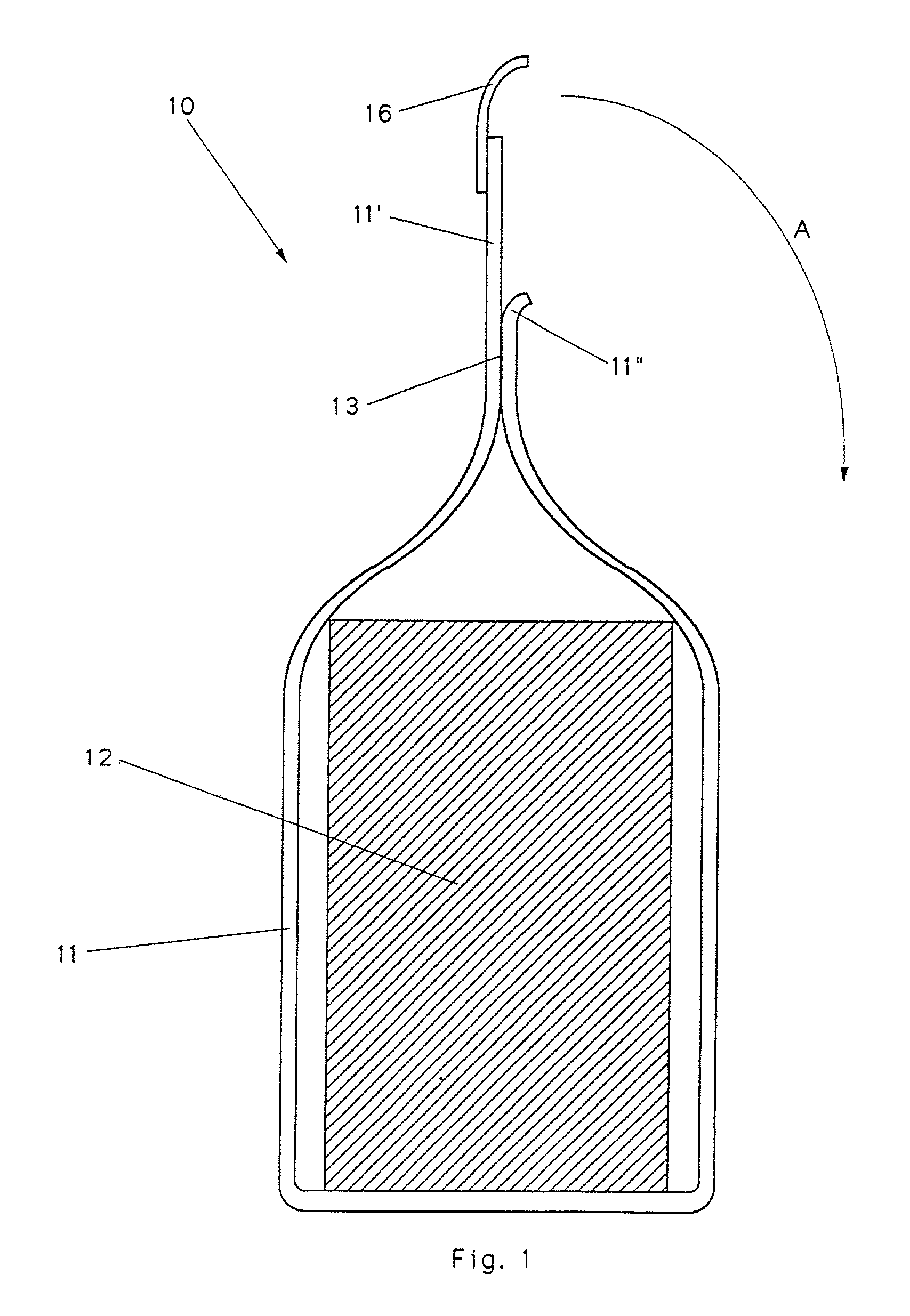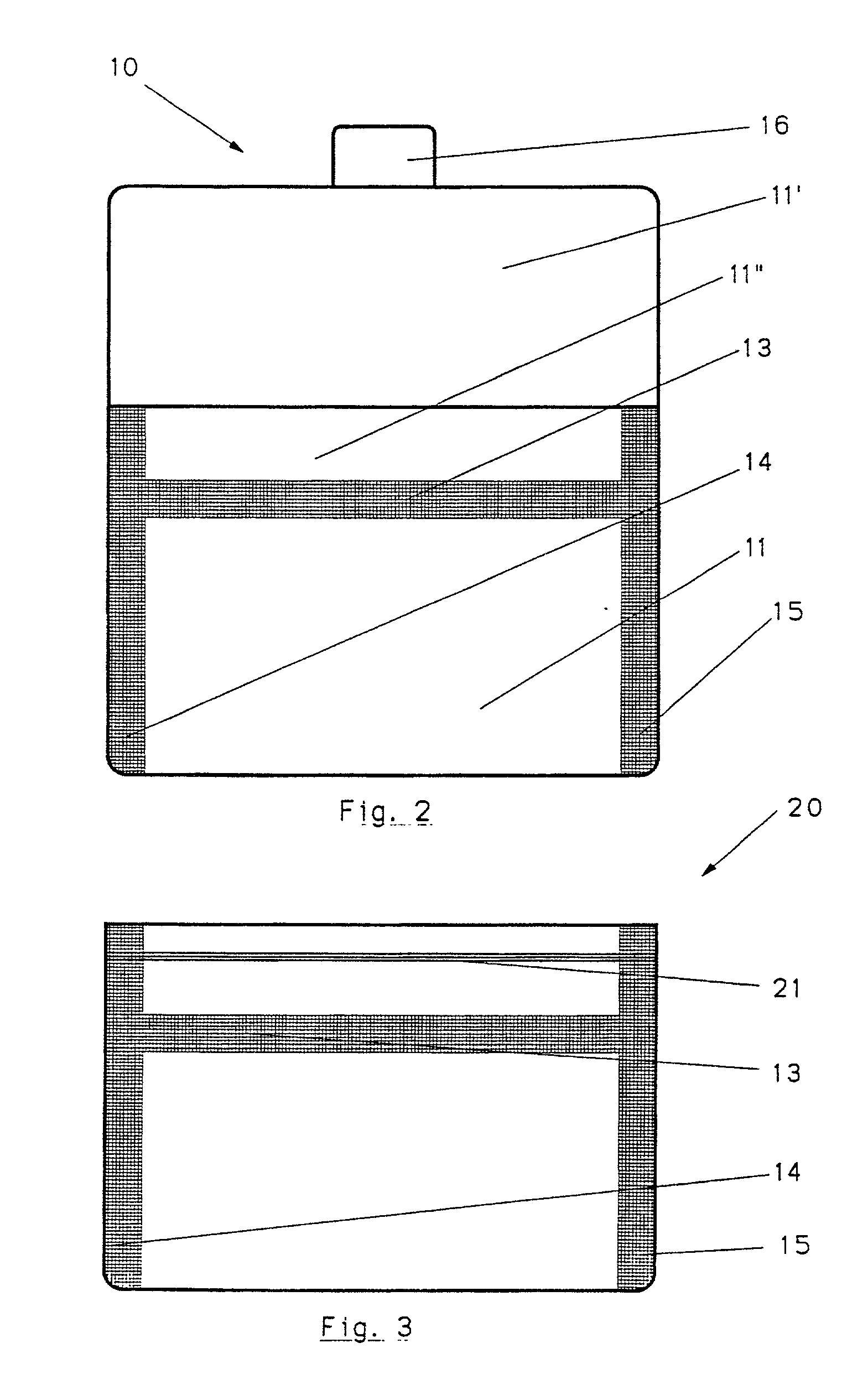The packing of a certain horizontally positioned product on an advancement conveyor shows a considerable
disadvantage due to the positioning of the longitudinal side of the packaging achieved by the first sealing operation, on the flat surface of the product and at the back of the packaging.
In such a way there does not result to be allowed the reading of what printed on the back of the packaging which is relative to the product therein contained, its ingredients, its origin, and so on; information to which customers are particularly attentive and sensitive, but which result to be hard to be accessed to because of the folded and sealed side.
Such a solution which is easily viable for products that are placed with the flat on the conveyor itself, is found to be remarkably difficult in case the products were positioned so as to lie on one of their small faces.
A first important drawback of certain solutions known in the art is constituted by the packaging being formed by
coupling two plastic films which are simultaneously unwrapped from two separate reels.
This kind of solution is bulky and requires a great accuracy while unwrapping the films, since these can be provided with wordings or designs which need to be matching in respect of each other when the bag or packaging is wrapped around the product.
The type of packaging having a zipper placed inside of the sealed area presents more than few disadvantages because the positioning of the lock below the longitudinal sealing does not guarantee a perfect airtightness of the packaging just as on the other hand it results to be necessary in order to preserve the food product therein contained.
On the other side, the known packagings provided with a zipper placed outside of the sealing line involve other disadvantages and drawbacks which are essentially due to the fact that when the film is folded in order to form the pouch, the
welding operation is carried out between respective inner and outer portions of the film; by way of example, in a pouch made of multi-layer peelable film constituted by an inner
polyethylene layer and an outer
polypropylene layer, when the inner and outer
layers are welded to each other the resulting chemical link is often not very homogeneous and the airtightness of the inner part of the pouch cannot be guaranteed.
It is indeed easy to understand that the sealing of the zipper onto the
plastic film does not indeed give the full certainty that the packaging is kept in a perfectly airtight condition, mostly in the areas covering the extreme edges of the zip itself.
Furthermore on account of its inherent features, the zip cannot be considered to be an airtight closing means.
This means that types of packaging equipped with the above described zip cannot be used as airtight packagings in a
modified atmosphere.
The main
disadvantage of the totality of the packagings of the prior art so far described is the impossibility they have to be sealed again after being opened once.
This means that once a typical packaging of the prior art such as one used for cheese or meats has been opened, it is not capable of guaranteeing an adequate preservation of the product that has not been consumed and which is left therein.
Furthermore, at the
present moment most of the times, when such a packaging is opened, this ends up being torn and almost entirely destroyed because the
consumer finds it impossible to follow the given tearing lines in order to be able to open it and proceed to the extraction of its content.
The sealing material used, which is normally constituted by polyethylene, does not indeed allow the sealing to be delaminated and the
consumer cannot therefore avail of the sealing lines such as those which are to be followed during the opening of the packaging itself.
Therefore if it is placed back into its original packaging, the product which has not been consumed is unavoidably in contact with the outside environment, provided that the packaging is still in such a condition to be used, i.e. if it has not been completely destroyed at that stage.
It ensues from this that there is a loss of freshness and taste, because the general hygienic level of the product at the time of purchase when the packaging was perfectly sealed has changed for the worse.
 Login to View More
Login to View More 


